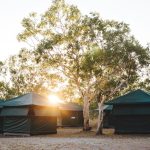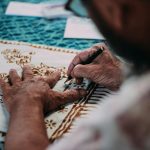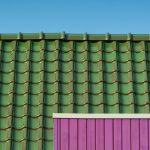If you've ever wondered whether material glue is waterproof, you're not alone. Understanding how to effectively waterproof fabrics can be a game-changer for your projects.
In this guide, you'll explore the properties and types of waterproof fabrics, as well as the advantages of using them. You'll also learn about choosing the right material glue and how to apply it to waterproof fabrics.
By mastering the art of waterproofing, you can ensure that your projects stand the test of time, no matter the elements.
So, let's dive in and discover the secrets of waterproof fabrics and material glue.
Key Takeaways
- Importance of waterproof fabric testing
- Proper care and maintenance to enhance durability
- Versatility for outdoor use
- Choosing the right material glue for waterproof fabrics
Understanding Waterproof Fabrics
If you want to understand waterproof fabrics, you need to know how they repel water and keep you dry in various weather conditions. Waterproof fabric testing is crucial to ensure that the fabric can withstand different levels of water exposure. The testing involves subjecting the fabric to simulated weather conditions, including heavy rain and wind, to assess its water repellent capabilities. Understanding the testing methods helps you make informed decisions when choosing waterproof gear.
Additionally, waterproof fabric care is essential for maintaining the fabric's effectiveness. Proper care involves using the right detergents and reapplying water repellent treatments when necessary. This helps to prolong the fabric's waterproof properties and ensures that it continues to provide reliable protection against moisture.
Properties of Waterproof Materials
To understand the properties of waterproof materials, examine their ability to repel water and maintain their effectiveness in various weather conditions. Waterproof fabric testing is crucial to ensure the material's ability to withstand water penetration. This includes tests for water resistance, hydrostatic pressure, and durability.
Waterproof fabric care techniques are also essential for maintaining the material's properties over time. Proper care may involve regular cleaning with a mild detergent, avoiding harsh chemicals that can compromise the waterproof coating, and reapplying waterproofing treatments as needed.
- Waterproof Fabric Testing
- Water Resistance Testing: Assessing the fabric's ability to repel water and prevent it from soaking through.
- Hydrostatic Pressure Testing: Evaluating the fabric's capability to withstand water pressure without allowing penetration.
- Waterproof Fabric Care Techniques
- Regular Cleaning: Using a mild detergent and gentle cleaning methods to remove dirt and debris without compromising the waterproof properties.
- Reapplication of Waterproofing Treatments: Periodically treating the fabric with waterproofing products to maintain its water-repellent capabilities.
Types of Waterproof Fabrics
Waterproof fabric's durability and effectiveness depend on the type of waterproof materials used in its construction. There are various types of waterproof fabrics, each with its own specific applications and fabric bonding techniques.
For instance, laminated fabrics consist of multiple layers, typically including a waterproof/breathable membrane bonded to the outer fabric. These are commonly used in outdoor gear such as rain jackets and tents, providing protection from the elements while allowing moisture to escape.
Coated fabrics, on the other hand, have a single layer of fabric treated with a waterproof coating or film. This type of fabric is often used in making waterproof bags, umbrellas, and outerwear.
Another type is the waterproof breathable fabric, which is designed to keep water out while allowing sweat vapor to escape, making it ideal for high-performance outdoor apparel.
Understanding the different types of waterproof fabrics and their respective applications and fabric bonding techniques is crucial in selecting the most suitable material for specific needs.
Advantages of Using Waterproof Fabrics
When it comes to waterproof fabrics, you'll appreciate the weather resistance benefits they offer. These fabrics are designed to withstand the elements, keeping you dry and comfortable in rainy conditions.
Additionally, their durability in wet environments and versatility for outdoor use make them a practical choice for a variety of activities.
Weather Resistance Benefits
You can rely on waterproof fabrics to provide excellent protection against the elements. These fabrics offer breathable protection, allowing air to pass through while repelling water, making them ideal for outdoor activities in wet conditions. They also excel in sealing seams, preventing water from seeping through the tiny gaps between fabric panels or stitches.
The weather resistance benefits of waterproof fabrics include:
- Breathable Protection
- Waterproof fabrics keep you dry while allowing sweat and moisture to escape, ensuring comfort during physical activities.
- Sealing Seams
- The meticulous sealing of seams ensures that no water can penetrate the garment, keeping you dry even in heavy rain or snow.
With these advantages, waterproof fabrics provide reliable protection from various weather conditions, making them essential for outdoor enthusiasts and professionals alike.
Durability in Wet Conditions
In wet conditions, waterproof fabrics demonstrate exceptional durability, maintaining their protective qualities even when exposed to heavy rain or moisture. This durability is a key advantage of using waterproof fabrics, as it ensures that the fabric can withstand prolonged exposure to wet conditions without compromising its functionality. Proper care and maintenance of waterproof fabrics can further enhance their durability, prolonging their effectiveness in protecting against moisture. Check out the table below for a quick comparison of the durability of waterproof fabrics compared to non-waterproof fabrics.
| Durability | Waterproof Fabrics | Non-Waterproof Fabrics |
|---|---|---|
| Resistance to moisture | High | Low |
| Longevity | Extended lifespan | Susceptible to damage from moisture |
| Maintenance | Requires specific care | Less maintenance needed |
| Flexibility | Retains flexibility | May become stiff when wet |
| Overall Durability | Excellent | Reduced in wet conditions |
Understanding the durability and fabric care of waterproof fabrics can help you make informed decisions when choosing materials for your outdoor gear or clothing.
Versatility for Outdoor Use
Versatility for outdoor use is one of the key advantages of utilizing waterproof fabrics, as they offer reliable protection in various weather conditions while maintaining their durability. When it comes to outdoor gear, waterproof fabrics provide exceptional performance, making them suitable for a wide range of activities such as hiking, camping, and fishing.
Here are some specific advantages:
- Weather Resistance: Waterproof fabrics are designed to withstand rain, snow, and wind, keeping you dry and comfortable during outdoor activities.
- *Waterproof Sealants*: These fabrics are often treated with waterproof sealants to enhance their ability to repel water and maintain breathability.
- Durability: They're built to withstand rugged outdoor environments, ensuring long-term use without compromising performance.
How to Maintain Waterproof Fabrics
To keep your waterproof fabrics in top condition, it's important to use proper cleaning techniques and reapply waterproofing treatment as needed.
Regular cleaning with a gentle detergent and a soft brush can help maintain the fabric's waterproof properties.
Additionally, reapplying a waterproofing treatment will ensure that your fabrics continue to repel water effectively.
Proper Cleaning Techniques
When cleaning waterproof fabrics, use a gentle detergent and lukewarm water to maintain their water-repellent properties. Avoid harsh chemicals or bleach, as they can compromise the fabric's waterproofing.
To maintain the integrity of the waterproof fabric, follow these fabric care and stain removal techniques:
- Fabric Care
- Gently brush off any loose dirt or debris before cleaning.
- Hand wash with a mild detergent or use a front-loading washing machine with a gentle cycle.
Following these fabric care and stain removal techniques will help preserve the waterproofing of the fabric, ensuring its longevity and performance.
Reapplying Waterproofing Treatment
To maintain the waterproofing of your fabric, you should reapply a waterproofing treatment periodically to ensure its continued water-repellent properties.
Reapplying waterproofing is essential for the long-term protection of your fabric against moisture, dirt, and stains.
Various waterproofing techniques are available, such as spray-on treatments, wash-in solutions, and wax-based products. It's important to follow the manufacturer's instructions for the specific waterproofing product you choose.
Generally, the process involves thoroughly cleaning the fabric, applying the waterproofing treatment evenly, and allowing it to dry completely.
Regular maintenance and reapplication of the waterproofing treatment will help to uphold the fabric's ability to repel water, ensuring that your outdoor gear, clothing, or any other waterproof fabric remains highly functional and durable in various weather conditions.
Choosing the Right Material Glue
You need to select a material glue that's specifically designed for waterproof applications. Choosing the right adhesive is crucial for ensuring long term adhesion properties, especially when working with waterproof fabrics.
Here are some key points to consider when choosing the right material glue:
- Waterproof Capability
- Look for a material glue that explicitly states its waterproof properties on the label or product description.
- Ensure that the glue is designed to withstand exposure to water, moisture, and humidity without compromising its adhesive strength.
- Flexibility and Durability
- Opt for a material glue that offers flexibility and durability, as waterproof fabrics often require adhesives that can withstand frequent movement and stress without losing their bond.
When selecting a material glue for waterproof fabrics, it's essential to prioritize longevity, water resistance, and the ability to maintain a strong bond over time. By choosing an adhesive that's specifically formulated for waterproof applications and emphasizes long term adhesion properties, you can ensure the effectiveness and durability of your waterproof fabric projects.
Applying Material Glue to Waterproof Fabrics
Applying material glue to waterproof fabrics requires carefully following the manufacturer's instructions to ensure proper adhesion and long-lasting waterproof properties. Before starting, ensure that the fabric is clean and free of any dust or debris that could interfere with the bonding process.
When working with waterproof fabrics, it's essential to choose a glue specifically designed for this purpose. Waterproof adhesives are formulated to create a strong and durable bond that can withstand exposure to moisture and harsh conditions. As you apply the glue, pay attention to any special instructions provided by the manufacturer regarding drying times and curing processes.
When applying the glue, use a thin, even layer to the surface of the fabric. Avoid using too much glue as it can lead to a messy finish and may not improve the waterproof adhesive properties.
After applying the glue, ensure that the fabric is allowed to bond and cure properly before exposing it to water or other elements. Following these guidelines will help you achieve the best results when applying material glue to waterproof fabrics.
Tips for Waterproofing Your Projects
When waterproofing your projects, carefully select the appropriate waterproof adhesive to ensure a strong and enduring bond with the fabric. For DIY projects and outdoor gear, the right waterproofing techniques can make a significant difference in the longevity and effectiveness of your creations.
Here are some tips to help you effectively waterproof your projects:
- Choose the Right Adhesive
- Look for adhesives specifically designed for waterproofing outdoor fabrics. These adhesives are formulated to withstand the elements and provide a reliable bond that won't deteriorate over time.
- Apply the Adhesive Correctly
- Follow the manufacturer's instructions for applying the adhesive. Ensure that the fabric is clean and dry before application, and use the adhesive sparingly but evenly to avoid clumping or uneven coverage.
Frequently Asked Questions
Can Material Glue Be Used to Repair Waterproof Fabrics That Have Been Torn or Punctured?
When repairing torn or punctured waterproof fabrics, material glue application is effective. It bonds well and maintains waterproof fabric durability. Apply the glue according to the instructions for a reliable repair that will stand up to the elements.
Is There a Specific Type of Material Glue That Works Best for Repairing Outdoor Gear Made of Waterproof Fabrics?
When repairing tents made of waterproof fabrics, using the right material glue is crucial. Look for a flexible, waterproof adhesive designed for outdoor gear. Alternatively, consider using sewing techniques to ensure a durable and long-lasting repair.
How Long Does Material Glue Take to Dry on Waterproof Fabrics?
On waterproof fabrics, material glue's drying time can vary based on application techniques. Consider compatibility with different fabric types and explore alternative adhesives for quicker results. Experiment with small patches to find the best fit.
Can Material Glue Be Used to Create Seams or Bond Two Pieces of Waterproof Fabric Together?
Yes, material glue can create waterproof seams and bond two pieces of waterproof fabric together. It offers advantages such as flexibility and ease of use, but has limitations in extreme conditions. Alternative seam sealing methods may be necessary.
What Are the Best Practices for Storing Material Glue and Waterproof Fabrics to Ensure They Remain in Good Condition for Future Use?
To ensure your material glue and waterproof fabrics stay in top condition, store the glue in a cool, dry place and the fabrics in airtight containers. When applying the glue, follow the manufacturer's instructions for optimal fabric bonding.
- What Is Pochampally Ikat? a Journey to India’s Silk City - June 27, 2025
- What Is Pochampally Ikat? a Journey to India’s Silk City - June 27, 2025
- What Is Pochampally Ikat? a Journey to India’s Silk City - June 27, 2025





